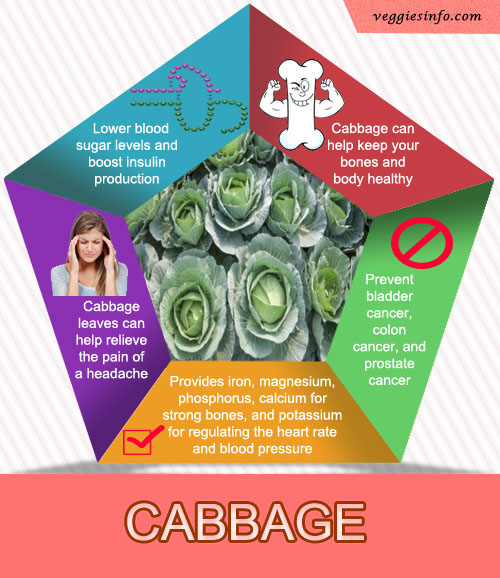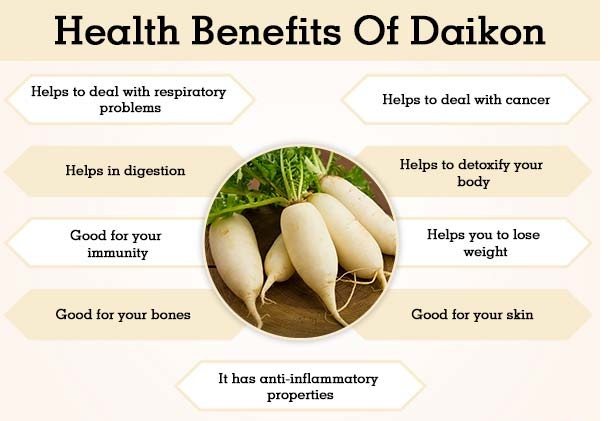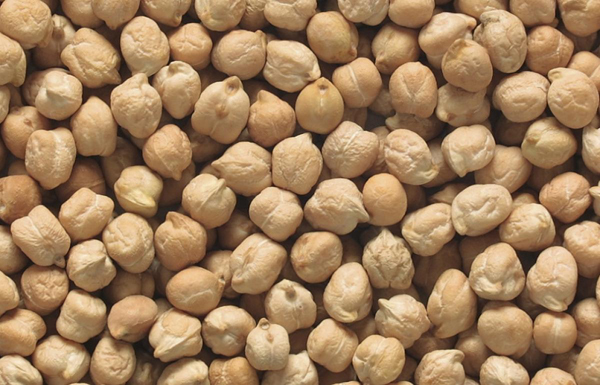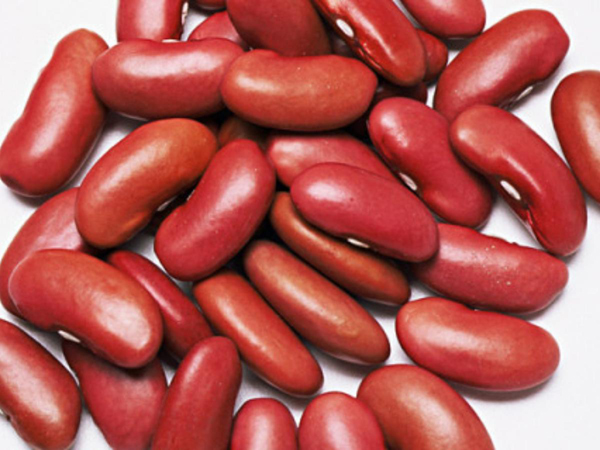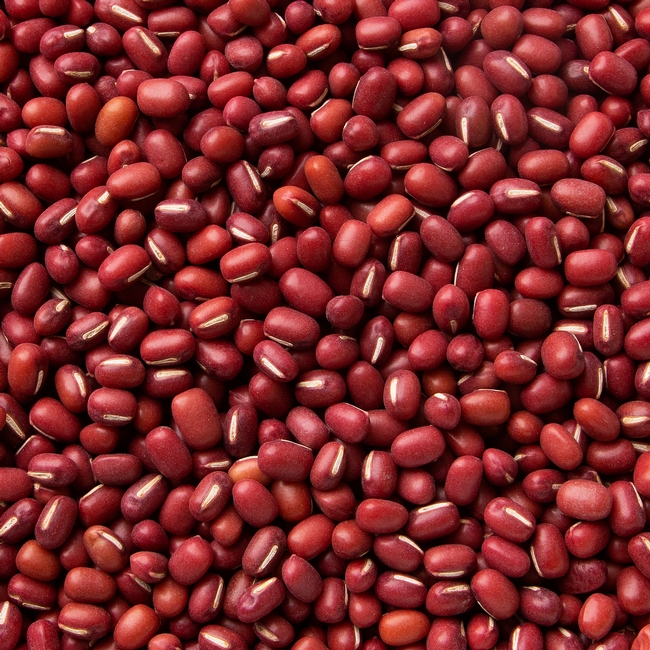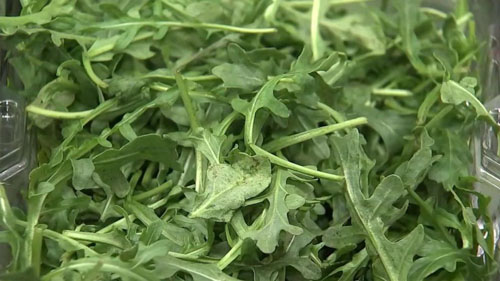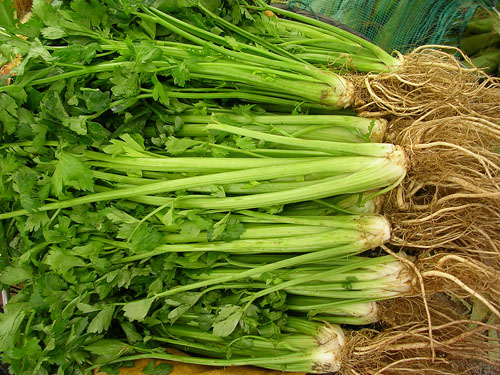List Of Vegetables
- Absinthe Interesting Facts

- Ahipa Nutritional Values

- Akudjura Various Uses

- Amaranth Health Benefits

- American Pokeweed

- Aniseed Myrtle Properties

- Aonori Summary

- Apple Mint Uses

- Arame Medicinal Uses

- Arracacha Nutritional Value

- Artichoke Nutrition Values

 Arugula Health Summary
Arugula Health Summary- Asarabacca Various Uses

- Asparagus Healthy Eating

- Avocado Nutrition Benefits

- Bamboo shoots

- Basil Nutrition Guide

- Beans Beneficial Properties

- Bean sprouts

- Beet Greens Nutrition Facts

- Beets Health Benefits

- Bishop’s weed Various Uses

- Bitter Gourd Nutritional Value

- Black Beans Benefits

- Blue Fenugreek Various Uses

- Boldo Medicinal Values

- Bok Choy Health Benefits

- Borage Greens Medicinal Purposes

- Bottle Guard Aspects

- Broccoli Health Properties

- Broccoflower Nutrition Guide

- Broccoli Raab Nutrition Values

- Broadleaf Arrowhead Health Benefits

- Brussel sprouts Nutrition Summary

- Burdock Health Benefits

- Cabbage Health Facts

- Camas Health Benefits

- Cantaloupe Nutrition Guide

- Canella Uses

- Carrots Health Properties

- Cardoon Nutritional Value

- Carola Summary

- Cassava Health Properties

- Catnip Oil Benefits

- Catsear Flower Uses

- Celeriac Nutritional Value

- Celery Health Benefits

- Chard(Swiss & red)Nutrition Values

- Chaya Nutrition Facts

- Chervil Properties

- Good King Henry

- Chickweed Health Benefits

- Chickpeas Nutrition Summary

- Chile peppers Health Benefits

- Chinese Artichoke Uses

- Chinese Broccoli Nutritional Valu

- Chinese cabbage Nutrition Values

- Chinese Mallow Aspects

- Chives Nutrition Guide

- Chrysanthemum Leaves Uses

- Cicely Unknown Benefits

- Cinnamon Myrtle Medicinal Value

- Collards Nutrition Facts

- Common Purslane Benefits

- Corn Health Values

- Corn Salad Interesting Facts

- Cress Medicinal Values

- Cucumber Health Benefits

- Culantro Leaves

- Curry Leaf Tree Origin

- Collard Greens Nutrition Facts

- Dabberlocks Interesting Facts

- Dandelion Health Benefits

- Dill Health requirements

- Drumstick Nutritional Value

- Dulse Health Benefits

- Earthnut Pea Properties

- Eggplant Nutrition Guide

- Elephant Foot yam Health Benefits

- Elephant Garlic Uses

- Endive Medicinal Properties

- Ensete Health Benefits

- Epazote Properties

- Fat Hen Interesting Facts

- Fingerroot Uses

- French Sorrel Health Facts

- Garlic Nutrition Values

- Gim seaweed Uses

- Ginger Flower Properties

- Ginger Medicinal Values

- Golden Samphire Aspects

- Greater Plantain Medicinal Uses

- Green onions Health Facts

- Green peas Nutrition Values

- Hijiki Nutritional Aspects

- Holy Basil Leaves

- Horseradish Health Benefits

- Onions Nutrition Guide

- Sea Beet Aspects

- Sea Lettuce Health Benefits

- Yam Nutritional Value

- Yarrow Medicinal Uses

- Zucchini Health Guide

- Veggies by seasons

- Veggies did you know??

- Comparison of veggies!!!

- Veggies and it's origin

- Comical View of Veggiess

- Categories of veggies

- Top Veggiess 100 To 91
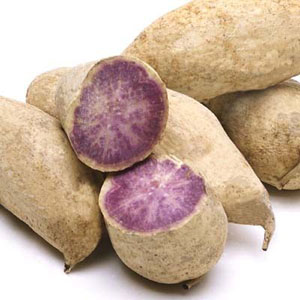
- Top Veggiess 90 To 81
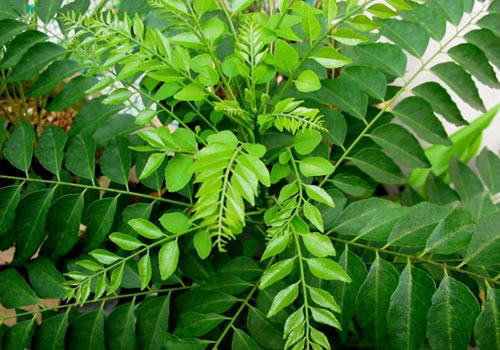
- Top Veggiess 80 To 71
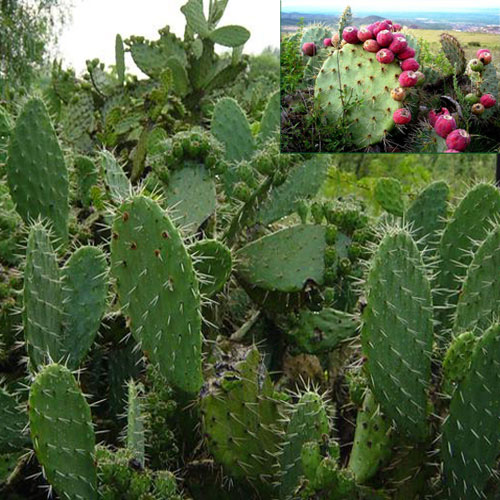
- Top Veggiess 70 To 61
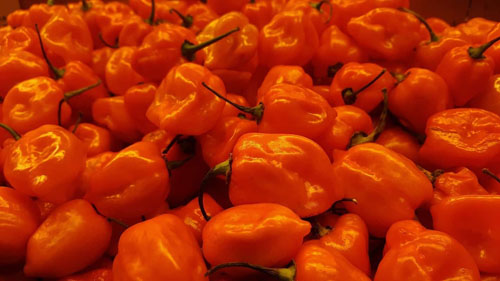
- Top Veggiess 60 To 51
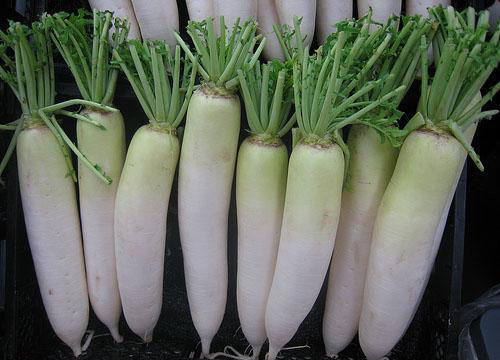
- Top Veggiess 50 To 41

- Top Veggiess 40 To 31
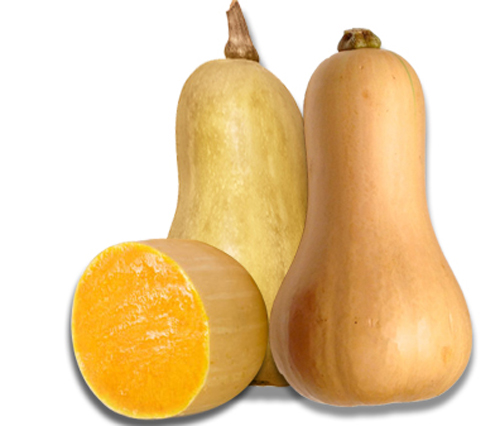
- Top Veggiess 30 To 21

- Top Veggiess 20 To 11
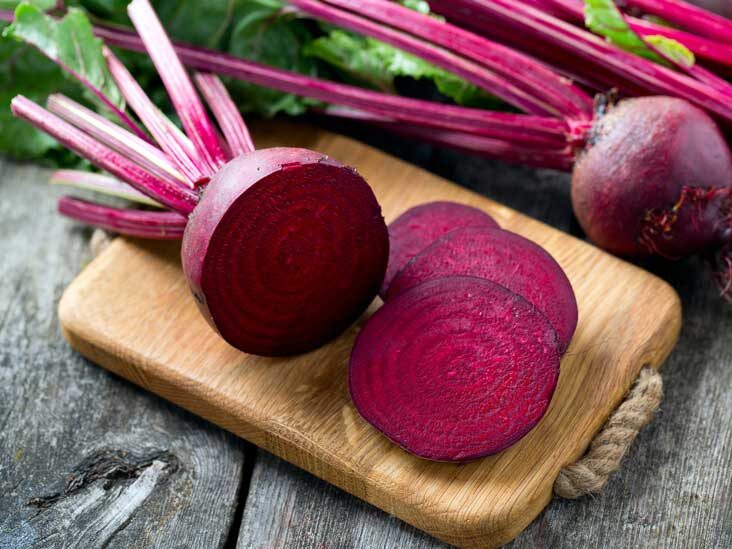
- Top Veggiess 10 To 01
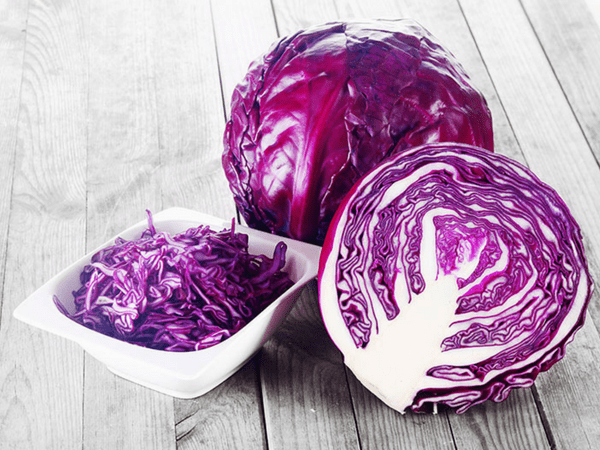
Veggie Picks
Top Veggiess 60 To 51 For Health Benefits
60. Daikon
Daikon is a cruciferous vegetable and is known as winter radish. It has a crunchy texture similar to carrot with mild sweet and peppery flavor. They are also available in red, green and purple colors. It is a low calorie vegetable with impressive health benefits. It is an excellent source of vitamin C and also provides us with many nutrients including folate, potassium, magnesium, calcium and copper. It may help in weight management; reduce the risk of chronic disease like heart disease, diabetes and cancer. It benefits our digestive and immune system.
It is easy to add to your diet including salads, soups, stews and it makes an excellent side dish.
- Boosting digestive health
- Bolstering your immunity
- Helping with weight management
- Promoting bone and skin health
- Assisting in detoxification
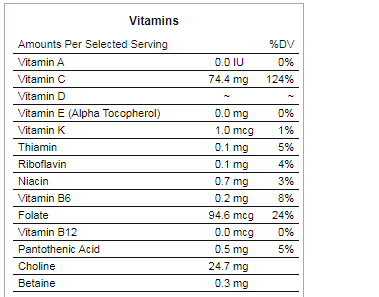
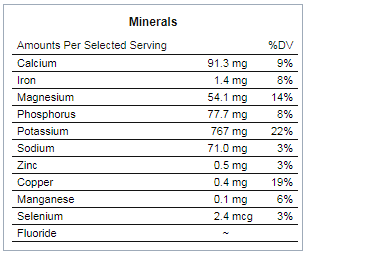
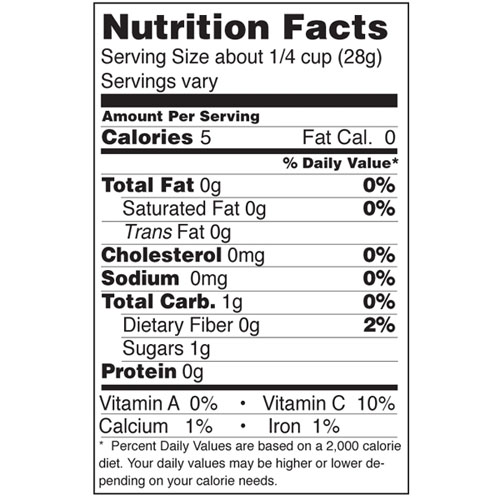
59. Chickpeas
Chickpeas are a type of a legume that is commonly available in brown and beige color. They have nutty taste and a grainy texture that goes well with many other dishes. Chickpeas are a good source of fiber and protein. It also contains folate, iron, phosphorus, copper and manganese. Chickpeas make a perfect filling that makes you manage your weight. It supports blood sugar level, diabetes, heart diseases and cholesterol level. It is an excellent alternative for meat and provides you with an excellent source of nutrients.
- One cup of cooked chickpeas contains 269 calories, 45 grams of carbohydrate, 15 grams of protein, 13 grams of dietary fiber, 4 grams of fat and 0 grams of cholesterol.
- A one-cup serving of raw chickpeas provides 50% of daily potassium needs, 2% vitamin A, 21% calcium, 13% vitamin C, 69% iron, 2% sodium, 55% vitamin B-6 and 57% magnesium. Additionally, chickpeas contain vitamin K, folate, phosphorus, zinc, copper, manganese, choline and selenium.
- Excellent vegan and gluten-free source of protein and fiber, chickpeas also contain exceptional levels of iron, vitamin B-6 and magnesium.
- Iron Boost.
- Stabilizing Blood Sugar and Low Glycemic Index.
- Minimizes hot flushes in post-menopausal women.
- Lower the risk of breast cancer, protect against osteoporosis.
- Excellent for weight loss diets.
- Lowering blood pressure.
- Reduce risk of colon cancer.
Chickpea is a nutrient dense food as one cup of boiled chick peas consist of 269 calories. This food has high calorie content thus equivalent to high energy levels. Apart from high calorific value chickpeas also contain a good amount of vitamins, proteins, fibre, iron and various other nutrients. They are the vegetarian source of protein that non vegetarians gain from fish. It is also rich in source of amino acids that are also considered to be building blocks of good health. Chickpeas like any other peas are rich in soluble and insoluble fibre aids in weight loss and prevents in digestive disorders. Salads with chickpeas are tasty; keeping you full for a longer time. This magic pea is highly recommended for women especially as it has phyto-chemicals in it which prevents the body from getting breast cancer, and also aids in prevention of osteoporosis. This food is rich in minerals like manganese iron and anti oxidants; a cup of chickpeas fulfills 85% of daily intake of nutrients. Thus making it a healthy legume.
Apart from all of its culinary usage chickpea flour is also used for benefiting skin and hair. Chickpea flour mixed with milk/ curd, turmeric and cream is used as a tan removing face pack. It is a very commonly used remedial measure made out of kitchen ingredients.
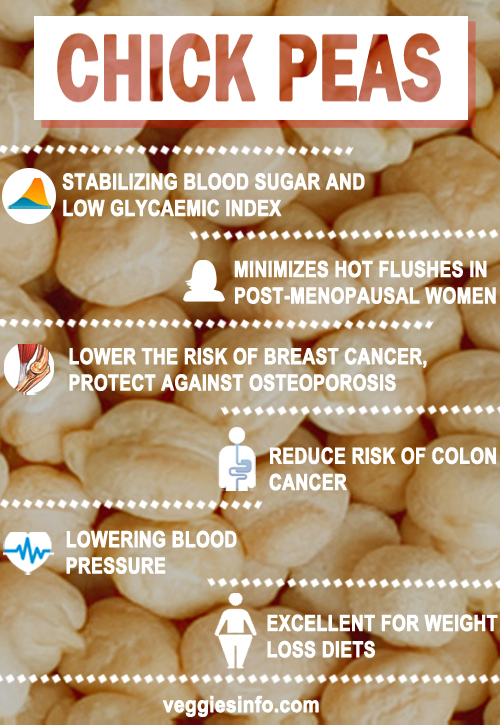
Chickpeas are commonly found in Middle East, Italian, Greek, Pakistani and Indian Cuisine. the world renowned dish prepared out of chickpeas is hummus spread made out of chickpea paste, tahini, garlic and olive oil. Chickpeas can be added to soups cold or hot soups in order to give it a nice texture and nutritional value. Salads with chickpeas are popular in India also known as sundal; made out freshly chopped onions, tomatoes, raw mangoes, coriander and lemon juice. Innovate classic recipes of pesto pasta or arabiatta by adding chickpea paste and giving it a twist of Middle East. Classic tea time snack in India known as pakoras are made out of chickpea flour.
58. Kidney beans
Kidney beans are dark red kidney shaped beans with creamy white flesh. They also come in different colors including cream, black, red, purple, spotted, striped and mottled. They have a sweet and meat flavor with a dense texture. Kidney beans are particularly rich in protein. It also contains molybdenum, folate, iron, copper, manganese, potassium and Vitamin K1. The high fiber content in kidney beans plays a major role in weight management. They help to maintain blood sugar level and promote colon health. As the name suggests it highly benefits your kidney. It should not be consumed raw as they may have toxic substances.
- Stabilizing Effect on Blood Sugar Levels & Weight Loss Benefits.
- Red kidney beans can provide a complete protein — when combined with rice or grains.
- Kidney beans are a Rich Source of Iron that increases your energy levels.
- Manganese and calcium content.
- Maturation of Red Blood Cells.
- Prevents diabetes.
- Prevents hypertension.
- Strengthens the immune system.
- Protect it from the harmful effects of free radicals.
- Lower risk of overweight and obesity.
- Improved Cognitive Ability.
- Prevent Osteoporosis.
- Cures Acne.
- Relieves Fatigue.
- Healthy Nails and hair.
- Reduce Asthma.
Kidney beans are star food as they are rich in vital nutrients and refuels the body of replenished resources. A cup of kidney beans which is 177g has 225 calorie which is high on energy. They are also known as fibre star as kidney bean has rich fibre content that helps in smooth functioning of the digestive system. It is a rich source of cholesterol lowering fibre and is considered to be a food for people who are watching their weight. According to proven studies it is stated that kidney beans are rich in folate and magnesium that helps in preventing cardiovascular disease and promoting good health.
- They are incorporated in many cuisines worldwide because of their rich texture and the ability of absorb seasoning to enhance the flavour of the food. Boiled beans can be a star of any salad, combining white bean black bean and kidney bean together can form a three bean salad. Adding finely chopped onions, tomatoes, green chillies and parsley to boiled kidney beans can become a nices afternoon snack. Canned or cooked kidney beans over an oven baked garlic bread topped with cheese is a popular tea snack in many eateries. Kidney beans can be used to make dips; mashed kidney beans flavoured with garlic chilly and ginger paste forms a spicy dip to indulge with tortilla chips or potato wafers. Kidney bean can be used to make a nice stew with pumpkin or sweet potato. Italian style spaghetti with kidney bean sauce is the new master chef styled delicacy enjoyed at restaurants. Speaking of classics; kidney bean has given the world chilli a dish that is consumed highly as a part of traditional Mexican cuisine. Vegetarian tacos use kidney bean as a replacement of grounded meat.
- Kidney beans have been in the news for its toxic content; it has definitely raised concerns in individuals if it is safe for human consumption. Kidney bean contains high levels of phytohemagglutinin and has toxic effect if not pre soaked or boiled to a high temperature to kill the effect. Canned beans need no such treatment and can be consumed directly.
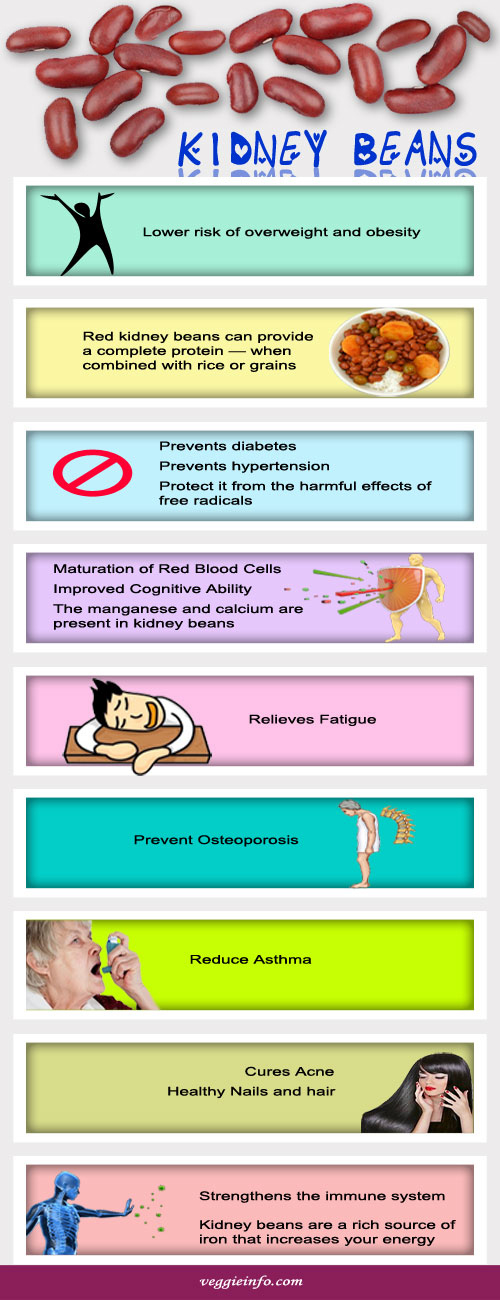
57. Adzuki beans
Adzuki beans are small, sweet red beans similar to kidney beans. They have a mild, nutty taste with a hint of sweet flavor. It is particularly rich in folate and manganese. It also has the fair amount of potassium, copper, magnesium, zinc, iron, thiamine and riboflavin. Azuki beans may improve digestion, heart health and bone health. It has the potential to reduce the risk of diabetes, blood sugar and cholesterol level. It provides a good amount of antioxidants and eliminates the free radical from the body. Adzuki beans prevent the spread of cancer cells. It is often enjoyed in salads, soups and stews.
Better digestion:
Adzuki bean is a wonderful dietary fiber that plays a major role in maintaining the digestive tract of the human body. This bean acts as a stimulating agent and causes peristaltic movement of food going into the digestive tract and assures a smooth consumption of nutritional elements from the food. By taking adzuki beans in, you can do away with issues like diarrhea, bloating and constipation.
Prevents diabetes:
The rich dietary fiber available in it regulates the natural activities of the insulin hormones and make keeps the sugar level in check. This helps arrest the onrush of diabetes and manages the symptoms of same thus preventing it before going into a higher level.
Boosts the function of heart:
Adzuki beans have naturally come with substances like potassium, folate, magnesium and all these collectively give a boost to the functioning of heart. This nutritional diet helps maintain the cholesterol level and thereby lessening the blood pressure of the patient. Helps in relaxing the human heart and lowering the risks of developing strokes and heart attacks.
Helps in weight reduction
This nutrition-rich diet helps balance the appetite feel of a person and makes him feel full. With adzuki beans, you don't have to contribute your calories and this makes it an ideal item to eat.
Gives power to bones
Adding adzuki beans to your food will add more strength to your bone and help prevent bone demineralization. An enticing feature about this fiber is that it helps you feel young all the time.
Maintains the skin
Adzuki is ideal for the cleansing of skin as it helps peel off flakes or scales of dead skin. You can also prepare a nourishing face mask by combining right proportion of bean powder with Aloe-Vera gel. It will help keep you away from skin allergies and infections.
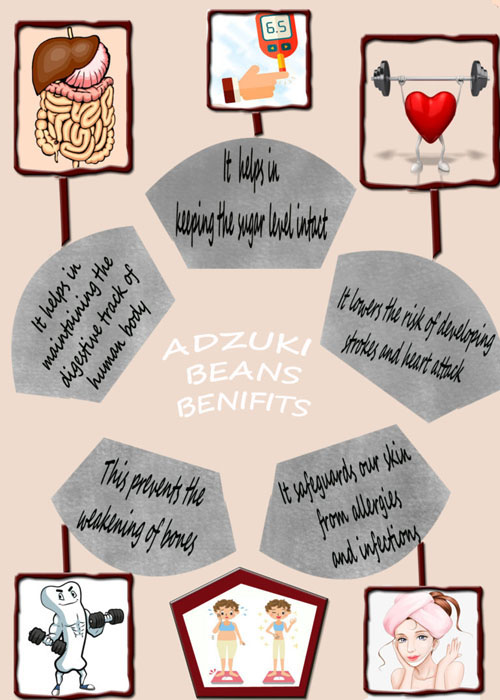
56. Romaine lettuce
Romaine lettuce is a variety of lettuce that is medium to large size with deep green, long leaves. It has a crisp texture and a deep taste that is easy to add in sandwiches, salads and burgers. Romaine lettuce is a nutritious vegetable that is rich in Vitamin A. It is also a good source of calcium, Vitamin K, folate, phosphorus, magnesium and magnesium. Romaine lettuce is a low calorie vegetable that promotes weight loss. They help to prevent osteoporosis, which enhances bone density. Romaine lettuce has the potential to reduce the risk of heart diseases and visionary problems. It slows down the aging process and boosts your immune system.
- Helps Weight Loss.
- Helps to protect the body from lung and oral cavity cancers.
- Low glycemic Index.
Lettuce is a super power food because one cup of shredded lettuce consist of only 12 calories, which is remarkably a very low calorie content , this not only helps to keep a check over the calorie consumed but it also helps to keep you full for a long time. Lettuce is rich in dietary fibre which promotes weight loss along side with the active metabolism and that leads to smooth bowel movements. Lettuce contains Vitamin C and beta carotene that is a heart friendly food;this vegetable has the ability to control the blood cholesterol and prevent clogging of arteries. Thus preventing cardiovascular problem to a large extent. Lettuce has high water content and is best consumed in summers to refuel the body of the replenished water levels.The minerals in lettuce help remove toxins and keep your acid/alkaline balance in order. Once you are balanced on this level there are a host of benefits including greater energy, clearer thinking, deep restful sleep, and youthful skin.Lettuce has an average glycemic index of 15, but because it has so few calories, its glycemic load is considered zero. Foods with low glycemic indexes are great for anyone watching their blood sugars for medical reasons, or for weight management.
- It is a rich source of vitamin K.
- Contains good amounts of minerals like iron, calcium, magnesium, and potassium, which are VeryEssential For Body Metabolism.
- 100 g fresh greens provide just 15 calories.
- Low Calorie Content and Almost Zero Fat.
Lettuce is a common sight in every salad, the crunch and the hydration in the salad is because of lettuce. Sandwiches and subs use lettuce as a core ingredient as it not only adds flavour but also gives a crunchy texture that gives a meal satisfaction keeping you full for a longer period. Wraps made out of lettuce leaves with filling of other vegetables and cous cous is a light tea time snack. Adding lettuce to a bowl of sautéed tofu and other vegetables dressed in vinaigrette forms a whole some meal replacement. Lettuce leaves are also used for its ornamental and garnish purpose because of their attractive appearance.
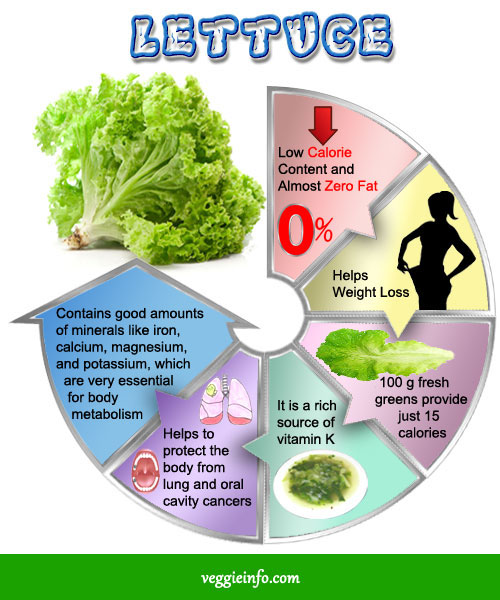
- It is worth to note that minor amount of lettuce is used while making tobacco-free cigarettes. Lettuce grows perfectly in full sun in loose, nitrogen-rich soils.
- The farmers can reap maximum leaves if these plants are sowed in cold weathers since lettuce prefer cold climates.
- Lettuce can be easily cultivated since it requires minimum intervention and cool climate.
- The leafy foliage is used as a mixture in salad, soups, sandwiches and wraps.
- The asparagus lettuce is very famous and its stem is eaten either raw or cooked.
- Lettuce is rich in vitamins such as K and A.
- They also have moderate iron and folate.
- The lettuce was consumed as a food during 50 AD by Romanians.
- Mostly lettuce is used in soups, salads, sandwiches and wraps.
- These leaves were administered by Egyptians and Romanians as medicinal herb.
- The ancient Egyptians used these leaves for boosting their sexual power and also for improving fertilized sperms.
- The folklores prescribed these medicines for treating rheumatism, tension, pain and nervousness.
- This plant is grown by many countries all over the world and used as a food crop.
- Many countries use the leaves during festivals and important occasions.
| Principle | Nutrient Value | Percentage of RDA |
|---|---|---|
| Energy | 15 Kcal | 1 % |
| Carbohydrates | 2.79 g | 2% |
| Protein | 1.36 g | 2% |
| Total Fat | 0.15 g | 0.5% |
| Cholesterol | 0 mg | 0% |
| Dietary Fiber | 1.3 g | 3% |
| Vitamins | ||
| Folates | 38 µg | 9.5% |
| Niacin | 0.375 mg | 2% |
| Pantothenic acid | 0.134 mg | 2.5% |
| Pyridoxine | 0.090 mg | 7% |
| Riboflavin | 0.080 mg | 6 % |
| Thiamin | 0.070 mg | 6% |
| Vitamin A | 7405 IU | 247% |
| Vitamin C | 9.2 mg | 15% |
| Vitamin E-a | 0.29 mg | 2% |
| Vitamin K | 126.3 µg | 105% |
| Electrolytes | ||
| Sodium | 28 mg | 2% |
| Potassium | 194 mg | 4% |
| Minerals | ||
| Calcium | 36 mg | 3.5% |
| Copper | 0.029 mg | 3% |
| Iron | 0.86 mg | 10% |
| Magnesium | 13 mg | 3% |
| Manganese | 0.250 mg | 11% |
| Phosphorus | 29 mg | 4% |
| Zinc | 0.18 mg | 1.5% |
| Phyto-nutrients | ||
| Carotene-ß | 4443 µg | — |
| Crypto-xanthin-ß | 0 µg | — |
| Lutein-zeaxanthin | 1730 µg | — |
55. Leek
Leek is a long vegetable stalk or a stem of a plant. It is relatable to the onion and garlic family. Leek is a firm and crunchy vegetable with mild onion taste. It is a nutritious vegetable with a good source of vitamin C, fiber, vitamin B6, iron and magnesium. It also contains healthy plant compounds that help in blood clot and reduce inflammation, cholesterol, blood pressure and cancer. It promotes weight loss and a healthy digestive system.
It can be eaten raw or make an excellent addition in stews, soups, salads, dios, stir fries and potato dishes.
- Leeks contain many flavonoid anti-oxidants, minerals, and vitamins.
- Provide good amounts of soluble and insoluble fiber.
- Have anti-bacterial, anti-viral and anti-fungal activities.
Leeks Benefits
- Fight Cancer.
- Protects linings of blood vessels.
- Protect against heart disease.
- Decrease risk of chronic inflammatory diseases.
- Antioxidant properties.
- Weight loss.
Leeks Storage Tip
It is often recommended to introduce at least one vegetable from the Allium family in our daily diet; leek being rich in source of nutrients is healthy addition. One cup of chopped leeks contains 32 calories which is considered to be an average calorie count. Leeks are rich in flavnoids known as kaempfrol, these flavnoids help in maintain the good health of blood vessels and protects the blood lining from damaging. Leeks are rich in anti oxidant property just like their relative of allium family remember that is garlic; these properties helps in maintaining good heart condition and prevents cardiovascular diseases. Allicin a compound d present in leeks helps in maintaining low blood pressure levels and controls blood sugar levels; it is also rich in anti bacterial and antivirus bodies that boost the immune system of the body and protects it against diseases. Leeks are source of various vitamins such as Vitamin B – Folate, vitamin A that promotes good eye sight, vitamin c that takes care of your skin and Vitamin K that takes charge of bone health. Apart from these it also houses many minerals such as iron, phosphorus, zeaxthin, carotenes and flavnoids.
Interesting Facts
Leek is a member of the onion family and along with garlic and chives, is also part of the allium family.
| Principle | Nutrient Value | Percentage of RDA |
|---|---|---|
| Energy | 61 Kcal | 2% |
| Carbohydrates | 14.15 g | 11% |
| Protein | 1.50 g | 3% |
| Total Fat | 0.30 g | 1% |
| Cholesterol | 0 mg | 0% |
| Dietary Fiber | 1.8 g | 5% |
| Vitamins | ||
| Folates | 64 µg | 16% |
| Niacin | 0.400 mg | 2.5% |
| Pantothenic acid | 0.140 mg | 3% |
| Pyridoxine | 0.233 mg | 18% |
| Riboflavin | 0.030 mg | 2% |
| Thiamin | 0.060 mg | 5% |
| Vitamin A | 1667 IU | 55% |
| Vitamin C | 12 mg | 20% |
| Vitamin E | 0.92 mg | 6% |
| Vitamin K | 47 µg | 39% |
| Electrolytes | ||
| Sodium | 20 mg | 1% |
| Potassium | 180 mg | 4% |
| Minerals | ||
| Calcium | 59 mg | 6 % |
| Copper | 0.120 mg | 13% |
| Iron | 2.10 mg | 26% |
| Magnesium | 28 mg | 7% |
| Manganese | 0.481 mg | 2% |
| Phosphorus | 35 mg | 5% |
| Selenium | 1 µg | 2% |
| Zinc | 1.2 mg | 11% |
| Phyto-nutrients | ||
| Carotene-ß | 1000 µg | — |
| Crypto-xanthin-ß | 0 µg | — |
| Lutein-zeaxanthin | 1900 µg | — |
How To Enjoy
Leeks can be enjoyed in many delicacies a few of them are mentioned as follows. Sautéed leeks served with thyme and lemon zest is enjoyed as a light snack. Leek can be made as a part of soups and stews to add crunch to the rich soups. Braised leeks along side with your favourite fish or turkey will enhance the flavours of the food. Leek stalks are stir fried with other vegetables to make a pan fried vegetable with accompaniments of Thai flat noodles or rice.
Leek is a less known vegetable and one needs to incorporate it in their diet to gain its nutritious benefits.
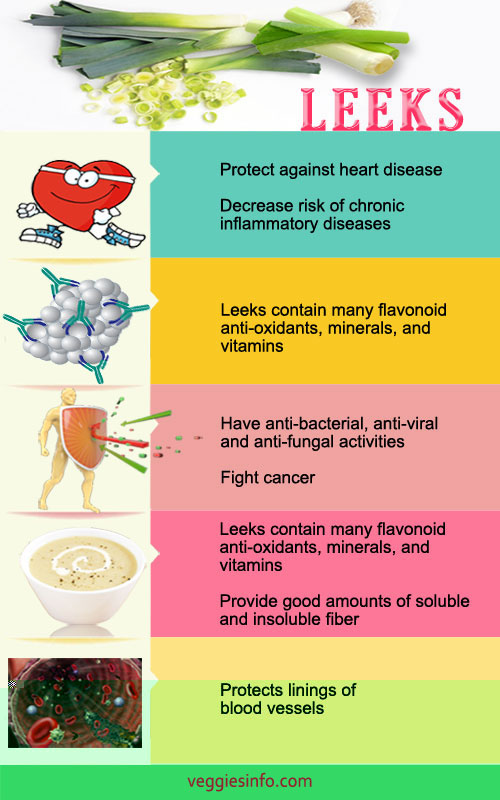
54. Parsley
Parsley is a flowering plant with tapering fibrous stalk and French curly leaf or Italian flat leaf. The bright green leaves of parsley have mild and grassy flavor. It is a herb that is used to garnish in soups, stew and or often made into juice. It is rich in vitamins K, A and C. It is also packed with folate, potassium, fiber and protein. The antioxidant present in parsley prevents cell damage and lowers the risk of certain diseases. It benefits your bone, eye and heart health. It has antibacterial and antiviral properties to benefit our immune system.
- Contains 8% of folates 220% of vitamin C 281% of vitamin A 1366% of vitamin K 14% of calcium 77.5% of iron and 5561 mcg of zeaxanthin 5054 mcg of carotene-beta.
- Existing kidney and gall bladder problems.
- Parsley essential oil, when massaged into the scalp, may reduce hair loss.
- Parsley tea relaxes stiff muscles and Encourages Digestion.
- Help control your blood pressure.
This food is just more than a garnish on top of your plate as said by many health experts. One cup of parsley chopped into 30.4 grams equals to 11 calories which makes it a low density energy food. People watching their weight by following the 2000 calorie a day can add parsley to their diet. It brings you a promise of a healthy heart. This leafy vegetable has contents of folic acid and vitamin B it plays a major role in protecting your heart; it controls the production of homocysteine a dangerous compound that increases the risk of heart attacks, strokes and failures. Folic acid rich it helps in reducing the chances of cancer in body; prevention of breast cancer, prostate cancer, colon cancer and cervix cancer can be possible if people incorporate parsley in their diet. Prevention and cure of bone related problems like arthritis can be possible to an extent as parsley is rich in Vitamin C. The anti inflammatory property present in it protects the body and contributes in increasing the immunity of the body.
| Principle | Nutrient Value | Percentage of RDA |
|---|---|---|
| Energy | 36 Kcal | 1.5% |
| Carbohydrates | 6.33 g | 5% |
| Protein | 2.97 g | 5% |
| Total Fat | 0.8 g | 3% |
| Cholesterol | 0 mg | 0% |
| Dietary Fiber | 3.3 g | 8.5% |
| Vitamins | ||
| Folates | 152 µg | 38% |
| Niacin | 1.313 mg | 8% |
| Pantothenic acid | 0.400 mg | 8% |
| Pyridoxine | 0.090 mg | 7% |
| Riboflavin | 0.098 mg | 7.5% |
| Thiamin | 0.086 mg | 7% |
| Vitamin A | 8424 IU | 281% |
| Vitamin C | 133 mg | 220% |
| Vitamin E | 0.75 mg | 5% |
| Vitamin K | 1640 µg | 1366% |
| Electrolytes | ||
| Sodium | 56 mg | 4% |
| Potassium | 554 mg | 12% |
| Minerals | ||
| Calcium | 138 mg | 14% |
| Copper | 0.149 mg | 16.5% |
| Iron | 6.20 mg | 77.5% |
| Magnesium | 50 mg | 12.5% |
| Manganese | 0.160 mg | 7% |
| Phosphorus | 58 mg | 8% |
| Zinc | 1.07 mg | 10% |
| Phyto-nutrients | ||
| Carotene-ß | 5054 µg | — |
| Crypto-xanthin-ß | 0 µg | — |
| Lutein-zeaxanthin | 5561 µg | — |
Chopped parsley can be added to any food just to enhance its beauty, boiled kidney beans with corn kennels, peppers and tomatoes with chopped parsley will make a refreshing salad.
This can be pureed and be used to make cream of parsley soup, it can be added to Italian and Mediterranean cuisine as it compliments well with their ingredients.It can be used to make marinating chicken and turkey; marination made of parsley lemon zest and chopped garlic gives a zesty taste to the meat.
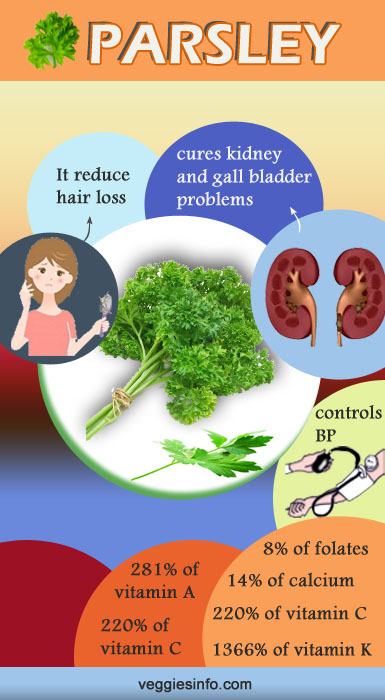
53. Arugula
Arugula is a cruciferous vegetable and the leaves have the spicy, tart, butter and peppery flavor. It is a succulent leafy vegetable that is an excellent source of vitamins K and A. It also provides us with vitamin C, folate, calcium, magnesium, manganese, potassium and pantothenic acid. Arugula offers protection against the growth of cancer cells. It provides essential nutrients for optimum cellular enzymatic and metabolic functions. Arugula reduces the risk of Alzheimer's disease and scurvy disease.
It is delicious to add in sandwiches, burger, stew, soups and salads.
- Excellent source of copper, iron, calcium, potassium, manganese and phosphorus.
- Rich in chlorophyll.
- Arugula too is one of Very Low Calorie Vegetable. 100 g of fresh leaves hold just 25 calories. Nonetheless, it has many vital phytochemicals, anti-oxidants, vitamins, and minerals that may immensely benefit health.
- Maintain the proper pH of the blood.
- Protects from lung,skin and oral cancers.
- Protects the aging brain from cognitive decline.
- Removing toxins from the body, they help to reduce the risk of disease.
- Protect the body from heart disease and sun damage.
- Helps to cleanse the blood and improve the supply of oxygen to various parts of the body.
- It also helps in maintaining good health of the skin.
| Principle | Nutrient Value | Percentage of RDA |
|---|---|---|
| Energy | 25 Kcal | 1% |
| Carbohydrates | 3.65 g | 3% |
| Protein | 2.58 g | 5% |
| Total Fat | 0.66 g | 3% |
| Cholesterol | 0 mg | 0% |
| Dietary Fiber | 1.6 g | 4% |
| Vitamins | ||
| Folates | 97 µg | 24% |
| Niacin | 0.305 mg | 2% |
| Pantothenic acid | 0.437 mg | 8% |
| Pyridoxine | 0.073 mg | 6% |
| Riboflavin | 0.086 mg | 7% |
| Thiamin | 0.044 mg | 4% |
| Vitamin C | 15 mg | 25% |
| Vitamin A | 2373 IU | 79% |
| Vitamin E | 0.43 mg | 3% |
| Vitamin K | 108.6 µg | 90% |
| Electrolytes | ||
| Sodium | 27 mg | 2% |
| Potassium | 369 mg | 7.5% |
| Minerals | ||
| Calcium | 160 mg | 16% |
| Copper | 0.076 mg | 8% |
| Iron | 1.46 mg | 18% |
| Magnesium | 47 mg | 12% |
| Manganese | 0.321 mg | 14% |
| Phosphorus | 52 mg | 7.5% |
| Selenium | 0.3 µg | <1% |
| Zinc | 0.47 mg | 5% |
| Phyto-nutrients | ||
| Carotene-ß | 1424 µg | |
| Carotene-a | 0 µg | |
| Lutein-zeaxanthin | 3555 µg |
Arugula is low in saturated fat and very low in cholesterol content. Loaded with goodness of health Arugula has a high amount of dietary fiber mostly found in plants only. It is rich in copper, zinc, vitamin c, vitamin K, vitamin B6, and many other nutrients. On consumption of 2 cups of Arugula the body gets 20% of Vitamin A, 50% of Vitamin K and 8% of vitamin C, and calcium that a body needs for a healthy functioning.
There are several health benefits related to consumption of arugula and some of these also include preventing diseases that could be life risking. Increasing the consumption of arugula will prevent heart disease, diabetes and will also reduce the risk of obesity. Studies and research confirm that consumption of cruciferous vegetables like arugula reduces the risk of lung or colon cancer as it contains sulforaphane giving a cancer fighting power. Bone fractures and weak bones have been a common complain these days, low intake of vitamin K and calcium is to be blamed for this condition. Consuming arugula will help in meeting the needs of vital nutrients of the body.
Arugula also known as rocket has a pungent flavour that is too strong for a leafy vegetable. This vegetable is consumed in different ways across the globe. Every region has its own way of cooking Arugula. In Italy rocket is used as a pizza topping which is added right after the baking period so that it does not wilt in heat. Rocket is also finely chopped and used as a seasoning in pasta and other Italian cuisine. In Brazil rocket is consumed in a raw form of salads mixed with mozzarella cheese and sun dried tomatoes. Egyptians and Turkish people like their rocket as a side dish accompanied with sea food. A sweet peppery alcohol known as Rucolino is made using arugula, this is a digestive alcohol and is usually consumed along side with the meals. These leaves also become a source of food for larvae of some moth species. After extracting the taramira oil from arugula seeds the seed cakes are used as a fodder for cattle and cows in Northern India.
Arugula is a delicious early summer vegetable that is available round the year , apart from its good taste , low calorie content and high nutrition value this leafy green also keeps the body hydrated and cool during summers.
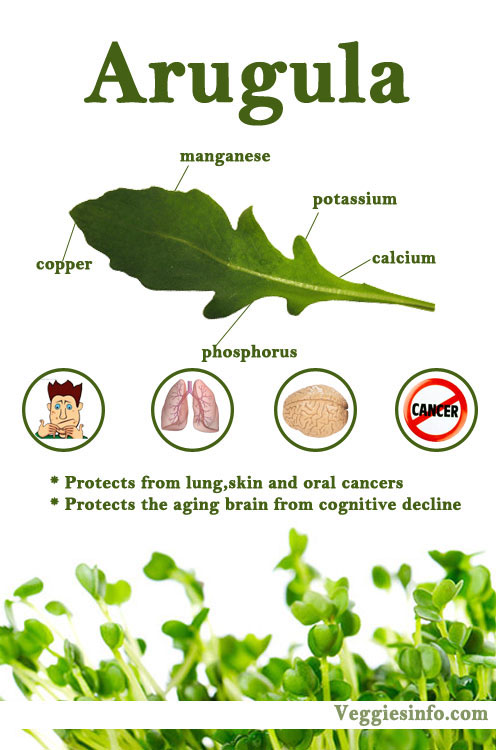
52. Celery
The crunchy and celery is well known for its health benefits. Celery has long fibrous stalks having Vitamin C, beta carotene and flavonoids. Nutrients in celery provide a wide range of health benefits. It has anti-inflammatory, antibacterial, antiviral properties. Celery prevents cancer, heart disease, stroke and maintains blood pressure. It also has the potential to treat liver disease, jaundice, urinary tract obstruction, rheumatic disorders, asthma and fever. It is a low calorie snack enjoyed eaten raw.
- Celery is a very rich source of antioxidants.
- Contains folate, vitamin A, potassium, vitamin C and vitamin K 1.6 grams of fiber per 100 grams.
- One large stalk contains only 10 calories.
- Protecting you from Acidity.
- Good for people with bladder disorders, kidney problems, cystitis.
- Celery seeds also assist in preventing urinary tract infections in women.
- Reduces Asthma Symptoms.
- Relief from migraines.
- Relief from ophthalmological diseases.
- Used to calm the nerves.
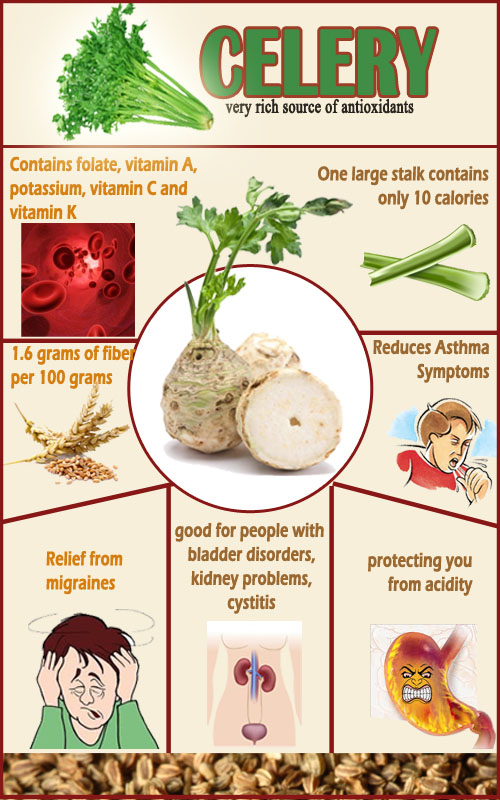
White celery is white due to a lack of sunlight. It is mainly available during the winter season and many people think it is superior to the ordinary green variety.
It is a popular inclusion in diet of an every person who is watching their weight; a cup of diced celery that is (100g) contain only 16 calories, making it a low calorie. It is rich in anti oxidant components such as zea-xanthin, lutein, beta carotene, that boost the immune system of the body and helps in preventing the body against cancer. Apart from being rich in anti oxidants celery also houses vital nutrients such as vitamins and minerals ; vitamin A , Vitamin K, Vitamin C, potassium and folate are a few to mention. Vitamin A is a recommended nutrient to maintain a good vision and it also aids in preventing oral cancer; a bright glowing skin will result on consumption right amount of this vitamin. In order to maintain good bone health one needs to ensure that they intake vitamin K rich foods that prevents the bones from fractures; It forms a good source of vitamin K. A good amount of potassium is present in celery and it helps to keep the blood pressure under control. Phthalates an active component present in celery helps to boost blood circulation in the body. This is also known as crunchy water as it has diuretic properties that aids in digestion and it is also advised that people who are ailing from diarrhoea should avoid celery as it may aggravate their condition. Some foods are natures Viagra; celery is that food. Highly aphrodisiac in nature this food helps in sexual arousal thus giving a satisfactory experience. It is profound for its medicinal use; used for reliving headaches and constipations this super food also helps in breast milk secretion in new mothers. Rheumatism a gouty condition is also said to be treated by intake of celery.
| Principle | Nutrient Value | Percentage of RDA |
|---|---|---|
| Energy | 16 Kcal | <1% |
| Carbohydrates | 3 g | 5.5% |
| Protein | 3.46 g | 6% |
| Total Fat | 1.12 g | 4.5% |
| Cholesterol | 0 mg | 0% |
| Dietary Fiber | 2.10 g | 5.5% |
| Vitamins | ||
| Folates | 36 µg | 9% |
| Niacin | 0.320 mg | 2% |
| Pantothenic acid | 0.246 mg | 5% |
| Pyridoxine | 0.074 mg | 6% |
| Riboflavin | 0.57 mg | 4% |
| Thiamin | 0.021 mg | 2% |
| Vitamin A | 449 IU | 15% |
| Vitamin C | 3.1 mg | 5% |
| Vitamin K | 29.3 µg | 24% |
| Vitamin K | ||
| Electrolytes | ||
| Sodium | 80 mg | 5% |
| Potassium | 260 mg | 5.5% |
| Minerals | ||
| Calcium | 40 mg | 4% |
| Copper | 0.35 mg | 4% |
| Iron | 0.20 mg | 2.5% |
| Magnesium | 11 mg | 3% |
| Manganese | 0.103 mg | 4.5% |
| Phosphorus | 24 mg | 3% |
| Zinc | 0.13 mg | 1% |
| Phyto-nutrients | ||
| Carotene-ß | 270 µg | — |
| Crypto-xanthin-ß | 0 µg | — |
| Lutein-zeaxanthin | 283 µg | — |
Celery Leaves is added to fresh salads to give it a nice flavour and crunch. It has high water content and helps in keep the salad fresh and hydrate the body simultaneously. They are added in soups, in sandwiches, added in tuna as a stuffing and sometimes even used to garnish dishes. Stalks of celery are cut into two halves and filled in with peanut butter making it a light snack. Seeds of celery are compressed to make oils. To sum it all celery is a vegetable that just cannot be avoided
51. Cabbage
Cabbage is a leafy green vegetable that belongs to the family of kale and cauliflower. The leaves may either have wrinkled or smooth texture. Cabbage is rich in Vitamins K and C. It also contains folate, manganese, vitamin B6, calcium, potassium and magnesium. Cabbage plays a prominent role in the function of the nervous system and energy metabolism. It has potential to reduce inflammation, heart disease and cancer. Cabbage lowers blood pressure, cholesterol level and may improve your heart health.
Cabbage is an impressive vegetable that can be added in stews, soups and salads.
- Provides iron, magnesium, phosphorus, calcium for strong bones.
- Potassium for regulating the heart rate and blood pressure.
- Cabbage is a very good source of Vitamin K.
- Vitamin-K has the potential role in bone metabolism through promoting osteotrophic activity.
- Vitamin-K also has established role in the cure of Alzheimer's disease.
- Prevent bladder cancer, colon cancer, and prostate cancer.
- This leaves can help relieve the pain of a headache.
- Lower blood sugar levels and Boost Insulin Production.
- It can help keep your bones and body healthy.
A leafy cabbage is very nutritious and is very low in fat and calories. A serving of 100grams of cabbage leaves consist of only 25 calories. Deficiency of vitamin C can lead to scurvy; which is normally indicated by bleeding gums, bad immune system leading to frequent infections and cracked lips. This is an abundant source of vitamin C that will prevent the body from being a prey to such a chronic disease. Premature aging can also be an effect of vitamin c deficiency. It consists of sulphur that helps the body from microbial infections and reduces the severity of wounds and ulcers in the body. Its family is known for its cruciferous property that helps in prevention of cancer. Its anti oxidant trait kills cancer cells and also has shown proven results in reduction of breast cancer. Anti inflammatory properties of cabbage prevents the body from being affected by irritations, skin infections allergies, joint fever etc. The popular cabbage soup diet is recommended by many dieticians to ensure weight loss while enjoying healthy cabbage soups. Since cabbage houses so many nutrients and minerals one need not worry about lacking in any of the vital intakes while consuming cabbage soup. Diseases like Alzheimer are known to be treated and prevented by adding cabbage to your diet. This in the medieval days was used to treat headaches and digestive disorders and was well known for its medicinal properties.
| Principle | Nutrient Value | Percentage of RDA |
|---|---|---|
| Energy | 25 kcal | 1% |
| Carbohydrates | 5.8 g | 4% |
| Protein | 1.3 g | 2% |
| Total Fat | 0.1 g | 0.5% |
| Cholesterol | 0 mg | 0% |
| Dietary Fiber | 2.50 mg | 6% |
| Vitamins | ||
| Folates | 53 µg | 13% |
| Niacin | 0.234 mg | 1.5% |
| Pantothenic acid | 0.212 mg | 4% |
| Pyridoxine | 0.124 mg | 10% |
| Riboflavin | 0.040 mg | 3% |
| Thiamin | 0.061 mg | 5% |
| Vitamin A | 98 IU | 3% |
| Vitamin C | 36.6 mg | 61% |
| Vitamin K | 76 µg | 63% |
| Electrolytes | ||
| Sodium | 18 mg | 1% |
| Potassium | 170 mg | 3.5% |
| Minerals | ||
| Calcium | 40 mg | 4% |
| Iron | 0.47 mg | 6% |
| Magnesium | 12 mg | 3% |
| Manganese | 0.160 mg | 7% |
| Phosphorus | 26 mg | 3.5% |
| Zinc | 0.18 mg | 1.5% |
| Phyto-nutrients | ||
| Carotene-a | 33 µg | — |
| Carotene-ß | 42 µg | — |
| Lutein-zeaxanthin | 30 µg | — |
This is a key ingredient to many Chinese dishes and thus the younger looking radiant skin of Chinese people can be explained. Cabbage soups, or Manchurian, add them to your noodles or just stir fry them with other vegetables cabbage goes well with everything. It is added to salads to bring in freshness and add nutrition to the meal. Cooking always leads to the loss of vital nutrients in the food so in order to make the best out of all the nutrition it has offer it is recommended to eat cabbage raw.
